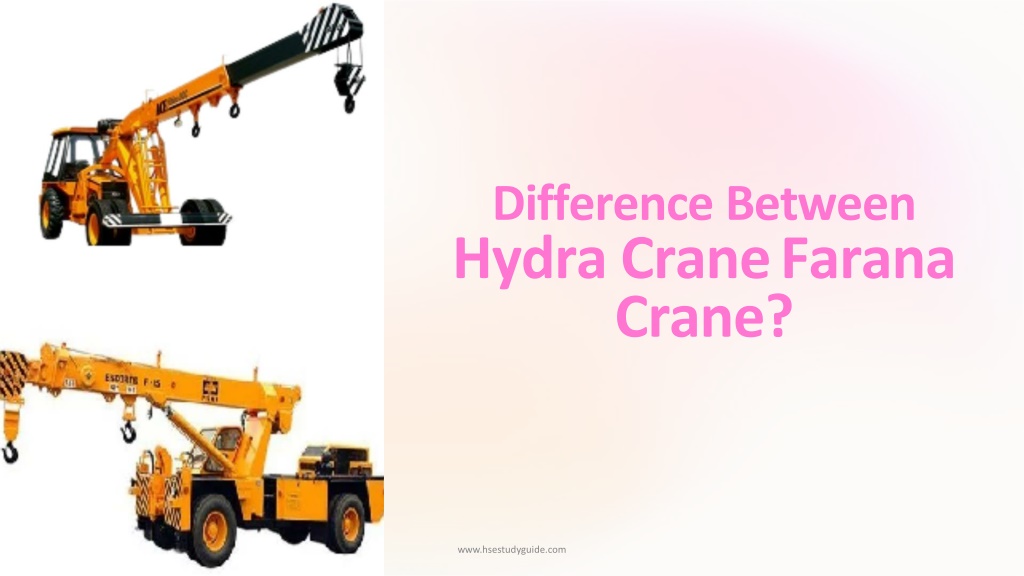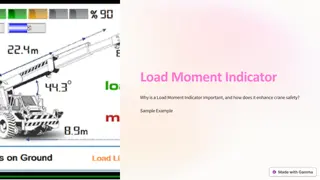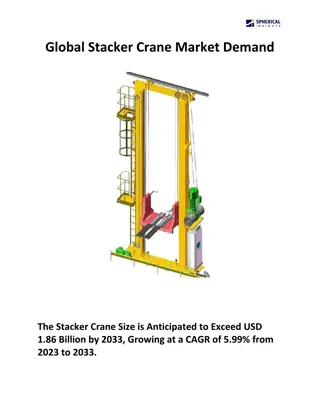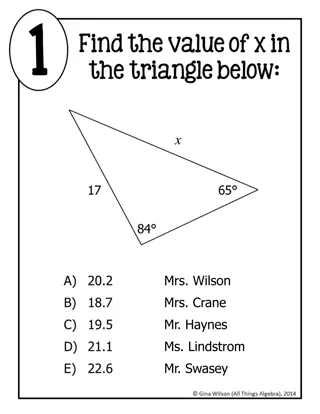Difference Between Hydra Crane and Farana Crane
Hydra crane and Farana crane are two distinct types of cranes used for lifting and moving heavy loads. They differ in their operating mechanisms, design and functionality, lifting capacity, applications, and mobility. Hydra cranes operate on hydraulic mechanisms with telescopic booms, while Farana cranes are mobile cranes with lattice or telescopic booms attached to a mobile platform. Farana cranes generally have higher lifting capacities and are used in larger construction projects, industrial settings, and infrastructure development.
Download Presentation

Please find below an Image/Link to download the presentation.
The content on the website is provided AS IS for your information and personal use only. It may not be sold, licensed, or shared on other websites without obtaining consent from the author.If you encounter any issues during the download, it is possible that the publisher has removed the file from their server.
You are allowed to download the files provided on this website for personal or commercial use, subject to the condition that they are used lawfully. All files are the property of their respective owners.
The content on the website is provided AS IS for your information and personal use only. It may not be sold, licensed, or shared on other websites without obtaining consent from the author.
E N D
Presentation Transcript
Difference Between Hydra CraneFarana Crane? www.hsestudyguide.com
Hydra Crane and Farana Crane Hydra crane and Farana crane are two distinct types of cranes used for lifting and moving heavy loads, but they have several differences: www.hsestudyguide.com
Operating Mechanism: Hydra Crane: Farana Crane: A hydra crane operates on hydraulic mechanisms, utilizing oil pressure to generate force for lifting heavy objects. These cranes typically have a telescopic boom that can extend and retract. Farana crane, also known as a mobile crane, operates on a different mechanism. It relies on a lattice boom or telescopic boom attached to a mobile platform. The Farana crane's operation may involve hydraulic or mechanical systems. www.hsestudyguide.com
Design and Functionality: Hydra Crane: Farana Crane: Hydra cranes are versatile and can be used for various applications due to their ability to extend and lift heavy loads using hydraulic power. Farana cranes, being mobile cranes, are designed for mobility and versatility in different job sites. They might have a higher reach and lifting capacity compared to hydra cranes in some cases. www.hsestudyguide.com
Lifting Capacity: Hydra Crane: Farana Crane: Generally, hydra cranes have a lower lifting capacity compared to larger mobile cranes like Farana cranes. Farana cranes are built to handle heavier loads and often come with a higher lifting capacity than hydra cranes. They are commonly used in construction sites for heavy lifting tasks. www.hsestudyguide.com
Applications: Hydra Crane: Farana Crane: Hydra cranes are often used for lighter lifting tasks in industries like maintenance, repair work, and smaller construction projects. Farana cranes are used in larger construction projects, industrial settings, and infrastructure development where heavier loads need to be lifted and transported over greater distances. www.hsestudyguide.com
Mobility: Hydra Crane: Farana Crane: Hydra cranes might have limited mobility compared to Farana cranes due to their design and lifting capacity. Farana cranes are built on a mobile platform, allowing them to be transported easily from one job site to another. They have better mobility and can navigate through construction sites more effectively. www.hsestudyguide.com
Conclusion In summary, hydra cranes are more versatile for lighter lifting tasks, whereas Farana cranes are designed for heavier lifting and are more mobile, making them suitable for larger construction projects and industrial applications. www.hsestudyguide.com






























